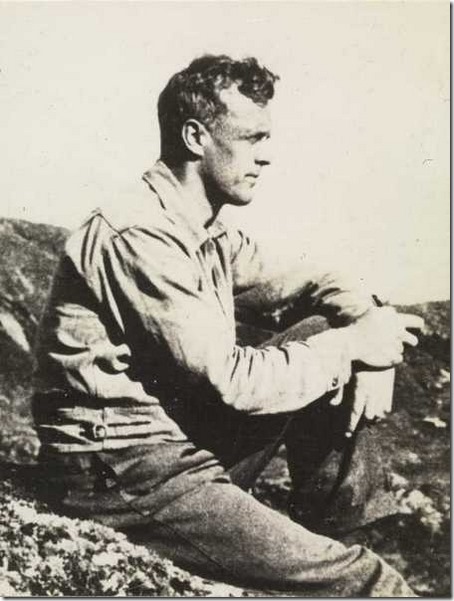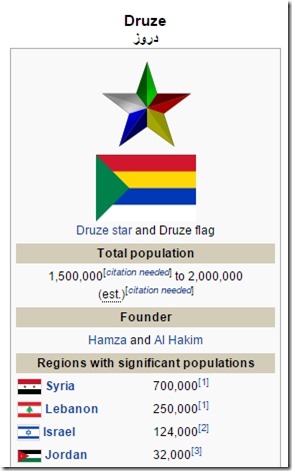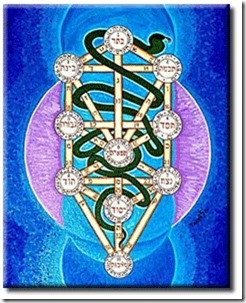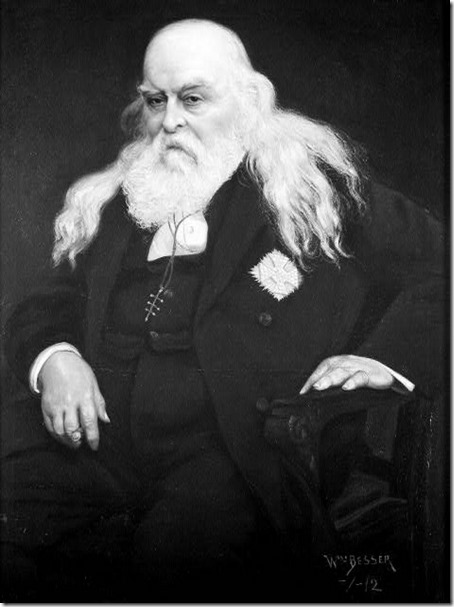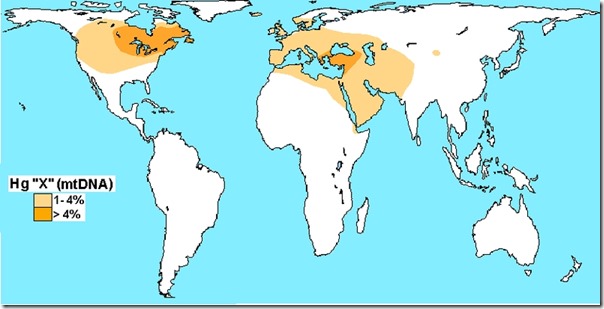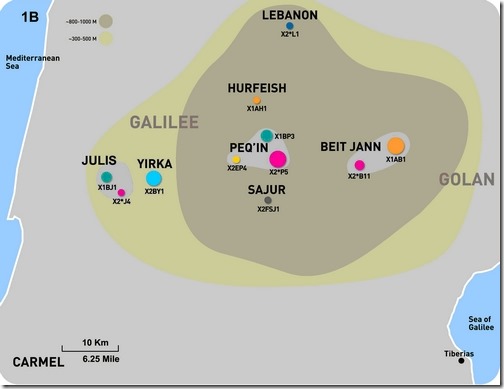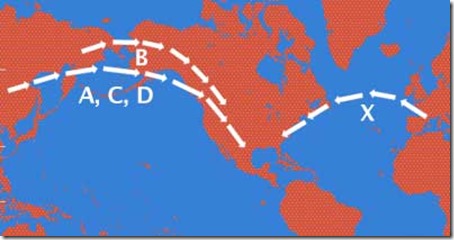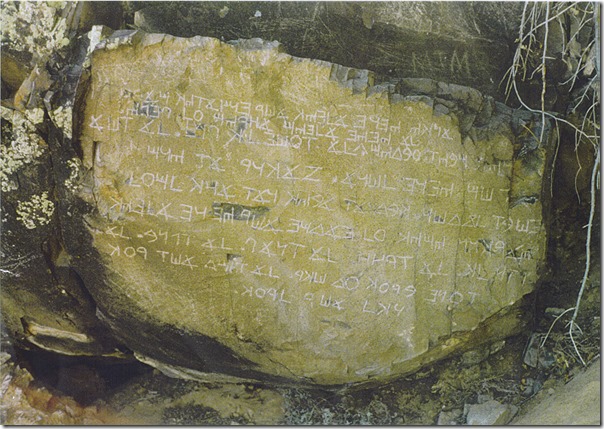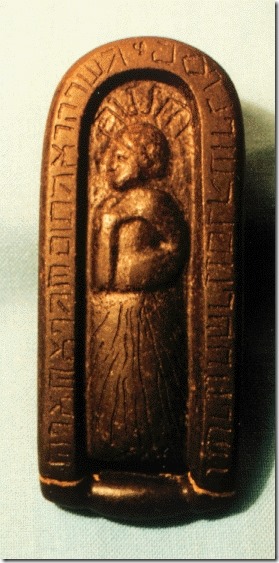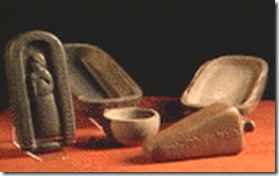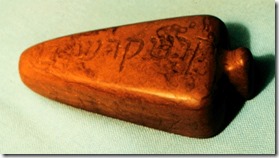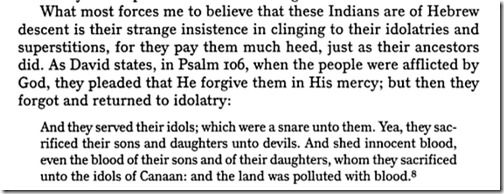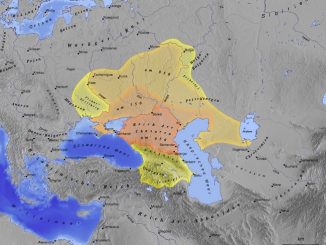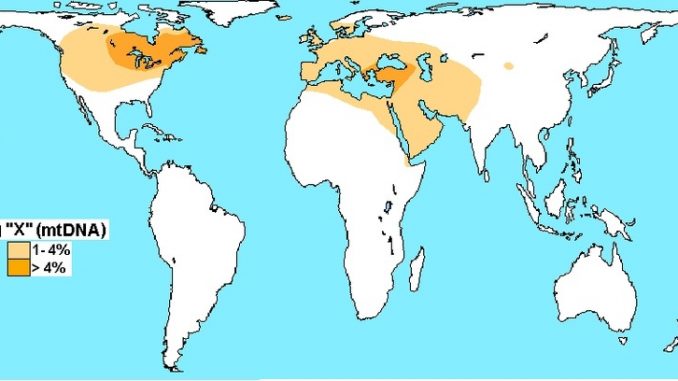
Da Christobal Colon, kjent av ettertiden som Christofer Columbus, etter en grundig planlagt ferd til det de økonomiske kreftene bak ekspedisjonen var fullstendig klar over var Amerika, ikke India, kom han ca. 500 år for sent til å kunne ta noen som helst ære over å være førstemann fra den nye verden. Dette har i hvertfall mange trodd etter at mainstreams paradigmeryttere ble kastet av sin historiske ganger av den kunnskapen Helge Ingstad bragte fram for alle å se etter utgravingene av norrøne tufter på L’Anse aux Meadows på New Foundland i Canada.
Hvem kom først fra øst?
Det vet jeg ikke, og jeg tviler på om særlig mange kan påberope seg kunnskap om dette. Men mange kom østfra til Amerika lenge før nordiske eller iberiske sjøfarere. Flere tusen år tidligere. Hvordan de gjennomførte reisen er ikke godt å si noe om, og da sitter en tilbake med såpass lite hardtslående dokumentasjon som anekdotiske overleveringer gjennom generasjoner, samt mengder med spekulasjoner. Dette ikke ment som noe negativt. All ny kunnskap skaffes til veie gjennom nysgjerrighet og spekulasjoner, og når det gjelder selve folkeforflytningene fra øst til vest over Atlanteren, finnes også vitenskapelig dokumentasjon.
Druze fra Midtøsten og Haplogruppe X
Først litt om hva og hvem druzene er, og litt om nevnte haplogruppe. Alt fra Wikipedia.
The Druze (Arabic: درزي derzī or durzī, plural دروز durūz; Hebrew: דרוזים, druzim) are a monotheistic religious and social community found primarily in Syria, Lebanon, Israel, and Jordan.[7] Rooted in Ismailism, a branch of Shia Islam, Druze beliefs incorporate elements from Abrahamic religions as well as Gnosticism, Neoplatonism, Pythagoreanism, and other philosophies, creating a distinct theology known to esoterically interpret religious scriptures and to highlight the role of the mind and truthfulness. The Druze call themselves Ahl al-Tawhid «the People of Monotheism» or «the People of Unity» or al-Muwaḥḥidūn «the Unitarians». The Druze community played an important role in shaping the history of the Levant, particularly Lebanon. The Druze’s social customs differ markedly from those of Muslims or Christians and they are known to form a close knit and cohesive social community but also integrate fully in their adopted homelands.
Location
The Druze people reside primarily in Syria, Lebanon, Jordan and Israel. [8][9] The Institute of Druze Studies estimates that forty to fifty percent of Druze live in Syria, thirty to forty percent in Lebanon, six to seven percent in Israel, and one or two percent in Jordan. About two percent of the Druze population are also scattered within other countries in the Middle East. [8][10]
Large communities of expatriate Druze also live outside the Middle East, in Australia, Canada, Europe, Latin America, the United States, and West Africa. They use the Arabic language and follow a social pattern very similar to those of the other peoples of the Levant (eastern Mediterranean).[11]
The number of Druze people worldwide exceeds one million, with the vast majority residing in the Levant.[12]
Vi må gå dypere enn dette for kanskje å kunne forstå litt mer om hvordan ting henger sammen i vår skakkjørte verden, alt etter prinsippet at alt henger sammen med alt. Khazarene (“jødene”) og deres talmudske rabbinere forteller rett ut at hele frimureriet er bygget opp av “jødisk” kabbala, men dette er en sannhet med modifikasjoner. Først minner jeg om noe jeg skrev i innlegget Gammel byggekunst:
Og byggmesterne? Mitt tips er at fremtidige utgravinger i Indonesia vil avsløre den samme signaturen som er funnet på alle andre forhistoriske byggsteder. Serpentinens klan hadde sitt bumerke.
Dette handler om stoff i forbindelse med den 22 graden innen frimureriet i USA, skrevet av Albert Pike, som var en av det nittende århundres mektigste menn i USA.
http://www.scribd.com/doc/74889875/The-Sons-of-the-Serpent-Tribe-Druze-in-Freemasonry
The Sons of the Serpent Tribe – Druze in Freemasonry
A link between the Unitarian religion (ka druze) and freemasonry as drafted by Albert Pike
THE DRUZES: A HISTORICAL BACKGROUND
PRELIMINARY
When we originally wrote this, all we had were very dated accounts. We have more accountsavailable to us now, and will eventually add them to what is included below. What follows is atranscription, mainly, from the original hand-written manuscript. Have patience, if some of thismaterial is in need of correction, and feel free to mail us those corrections!
HISTORY — OVERVIEW
In the 22°, the side lectures point to the sect known as the Druzes. Let us quote the particularlecture in question:
«The Tsidunai or Phoenicians were ever ready to aid the Israelites in their holy enterprises. Thetie between them was the mysteries, into which the principal persons of both nations wereinitiated; Moses having necessarily received them in Egypt, before he could marry the daughterof a priest of On. These mysteries, modified by Solomon, or perhaps at an earlier day byJoshua or even Moses, to suit the genius and manners of the Jewish people, became Masonry, such as it was practiced at the building of the Temple, and such as it has in partcome down to us. Khñrñm, King of Tsñr in Phoenicia, and Khñrñm Abai, also a Phoenician and
not a Jew, were likewise initiates; and hence the intimate connection between them andSolomon, as Masons. The people of Tsidñn, a city of Phoenicia, were employed by Noah to cutcedars on Mount Libanus, of which to build the ark, under the superintendence of Japhet. Hisdescendants repeopled Tsidñn and Phoenicia, and at a later day his posterity, under AdonKhñrñm, cut in the same forests cedars for King Solomon: and at a time still later, they felledtimber on the same mountain to construct the second Temple.
«Upon the same mountain it is said that they established Colleges or Associations of Artificers,like those of Etruria and afterward of Rome. Of this we can only say that it is possible, becauseassociations of workers have been common in all ages.
«It is supposed that there were Colleges of Artificers in Etruria, as there certainly were atRome; and Phoenicians, who voyaged far and traded everywhere, and who honored the skill ofthe Architect and Artisan, no doubt had similar colleges.
«Wherever such associations existed, they necessarily had modes of recognition of each other;and they were honored everywhere. Solomon himself, whose wisdom gave him a true idea ofthe dignity of labor, built a palace on the mountain, to which he often repaired to inspect theprogress of the work. The names of the Patriarchs who were the superintendents of theworkmen on the mountain at different periods were preserved in our pass-words. Theinstitution of Colleges upon Mount Libanus was perpetuated by the Druses, from whom theCrusaders obtained a knowledge of this or a similar Degree.»
— Pike, Liturgy for the 22°.
Genforskning viser at innvandringen til USA også skjedde østfra
Background
Phylogenetic mitochondrial DNA haplogroups are highly partitioned across global geographic regions. A unique exception is the X haplogroup, which has a widespread global distribution without major regions of distinct localization.
Principal Findings
We have examined mitochondrial DNA sequence variation together with Y-chromosome-based haplogroup structure among the Druze, a religious minority with a unique socio-demographic history residing in the Near East. We observed a striking overall pattern of heterogeneous parental origins, consistent with Druze oral tradition, together with both a high frequency and a high diversity of the mitochondrial DNA (mtDNA) X haplogroup within a confined regional subpopulation. Furthermore demographic modeling indicated low migration rates with nearby populations.
Conclusions
These findings were enabled through the use of a paternal kindred based sampling approach, and suggest that the Galilee Druze represent a population isolate, and that the combination of a high frequency and diversity of the mtDNA X haplogroup signifies a phylogenetic refugium, providing a sample snapshot of the genetic landscape of the Near East prior to the modern age.
MitochondrialDNA (mtDNA) haplogroup testing led to the surprising
hypothesis that some of the first Americans came from Europe
thousands of years ago.
Finnes arkeologiske og historiske funn som støtter opp om hypotesen?
Svaret på spørsmålet er et ubetinget ja. Mengden dokumentasjon er overveldende, men har dessverre blitt undertrykket av paradigmerytterne i århundrer. Nå følger noen eksempler.
Chief Joseph
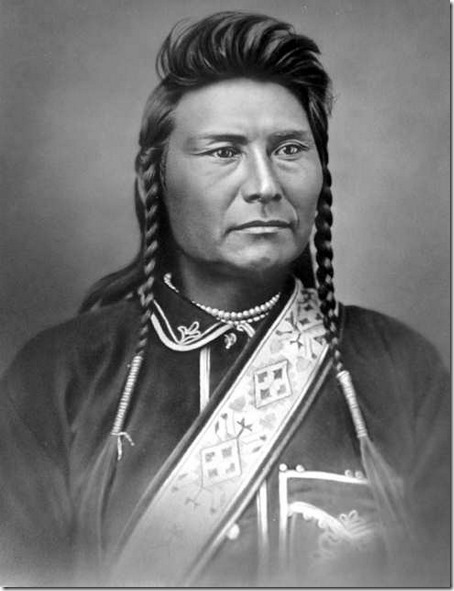
Høvding Joseph (1840-1904) av nez perce-stammen
Where Did Chief Joseph Get His Mesopotamian Tablet?
When Chief Joseph, a renowned Nez Perce leader, surrendered to Europeans in 1877, he gave a special gift to General Nelson Appleton Miles, wrote Vine Deloria, Jr. in his book Red Earth white Lies. The gift received by the general was a pendant that turned out to be an ancient Mesopotamian cuneiform tablet. According to Benjamin Daniali of AssyriaTimes.com, the tablet was translated by Robert Biggs, professor of Assyriology at the Oriental Institute of the University of Chicago. Professor Biggs found that it was a sales receipt for a lamb dating back to 2042 B.C.Mary Gindling of Helium’s History Mysteries wrote, “The chief said that the tablet had been passed down in his family for many generations, and that they had inherited it from their white ancestors. Chief Joseph said that white men had come among his ancestors long ago.” Chief Joseph was a man of honor, and there was no reason for him to invent a flowery story about the origins of his gift. Furthermore, Gindling eliminated the possibility of forgery based on the fact that cuneiform had not been deciphered until 1846, and a potential forger would have had to be “familiar not only with the ancient language itself, but with the shape of the tablets created by the ancient scribes”.
Los Lunas Decalogue-steinen
Da Helge og Anne-Stine Ingstad gjennom sine utgravinger på Land of Medows på New Foundland fant tufter etter langhus, og et spinnhjul fra vikingtiden, eksploderte de akademiske «fakta»besitterne som om de var forhåndsprogrammert til å forsvare det håpløse paradigmet om at Colombus var førstemann til mølla av befolkningen i vår del av verden. Eksplosjonen ble ikke særlig mindre etter funnet av den over nevnte stein.
Los Lunas-steinen har navnet sitt etter funnstedet i New Mexico, og har en inskripsjon av De ti bud på hebraisk, med noen få greske bokstaver blandet inn. Man antar at steinen fikk sin tekst innhugget under den Bysantiske perioden år 527-565 etter Kristus. Steinen er bekreftet å komme fra området der funnet ble gjort.
http://www.econ.ohio-state.edu/jhm/arch/loslunas.html
The Los Lunas Inscription is an abridged version of the Decalogue or Ten Commandments, carved into the flat face of a large boulder resting on the side of Hidden Mountain, near Los Lunas, New Mexico, about 35 miles south of Albuquerque. The language is Hebrew, and the script is the Old Hebrew alphabet, with a few Greek letters mixed in. See Cline (1982), Deal (1984), Stonebreaker (1982), Underwood (1982), and/or Neuhoff (1999) for transcriptions and translation, and Deal (1984) for discussion and photographs of the setting.
George Moorehouse (1985), a professional geologist, indicates that the boulder is of the same basalt as the cap of the mesa. He estimates its weight at 80 to 100 tons, and says it has moved about 2/3 of the distance from the mesa top to the valley floor since it broke off. The inscription is tilted about 40 degrees clockwise from horizontal, indicating that the stone has settled or even moved from its position at the time it was inscribed. (The above photograph was taken with a tilted camera.)
In 1996, Prof. James D. Tabor of the Dept. of Religious Studies, University of North Carolina – Charlotte, interviewed the late Professor Frank Hibben (1910-2002), a retired University of New Mexico archaeologist, «who is convinced that the inscription is ancient and thus authentic. He reports that he first saw the text in 1933. At the time it was covered with lichen and patination and was hardly visible. He was taken to the site by a guide who had seen it as a boy, back in the 1880s.» (Tabor 1997) At present the inscription itself is badly chalked and scrubbed up. However, Moorehouse compares the surviving weathering on the inscription to that on a nearby modern graffito dating itself to 1930. He concludes that the Decalogue inscription is clearly many times older than this graffito, and that 500 to 2000 years would not be an unreasonable estimate of its age.
…
Cyrus Gordon (1995) proposes that the Los Lunas Decalogue is in fact a Samaritan mezuzah. The familiar Jewish mezuzah is a tiny scroll placed in a small container mounted by the entrance to a house. The ancient Samaritan mezuzah, on the other hand, was commonly a large stone slab placed by the gateway to a property or synagogue, and bearing an abridged version of the Decalogue. Gordon points out that prosperous Samaritan shipowners were known to live in Greek communities at the time of Theodosius I circa 390 A.D., and proposes that the most likely age of the Los Lunas inscription is the Byzantine period.If Los Lunas is indeed a Byzantine Samaritan inscription, it may be significant that the sixth century historian Procopius reports that the Byzantine Emperor Justinian I (r. 527-565 A.D.) undertook a massive persecution of the Samaritans in particular, which
“… threw Palestine into an indescribable turmoil. Those, indeed, who lived in my own Caesarea and in the other cities, deciding it silly to suffer harsh treatment over a ridiculous trifle of dogma, took the name of Christians in exchange for the one they had borne before, by which precaution they were able to avoid the perils of the new law. …. The country people, however, banded together and determined to take arms against the Emperor … For a time they held their own against the imperial troops; but finally, defeated in battle, were cut down, together with their leader. Ten myriads [100,000] of men are said to have perished in this engagement, and the most fertile country on earth thus became destitute of farmers. ( Chapter 11, and in particular screens 52-54.)”
The Newark, Ohio Decalogue Stone and Keystone
Det finnes flere funn i USA som peker i retning av at kontinentet tidlig fikk besøk av folk fra den gamle verden, og også disse funnene peker mot Israel/Egypt, og som med Los Lunas-steinen er det De ti bud i hebraisk skrift, datert kanskje så mye som to tusen år tilbake.
http://www.econ.ohio-state.edu/jhm/arch/decalog.html
Jeg siterer ikke fra denne forskningen, men oppfordrer de interesserte å klikke på linken over som gir en god innføring i hva dette dreier seg om. Her er noen få bilder av steinene som ble funnet på østkysten av USA i det nittende århundret.
Kokain og nikotin i egyptiske mumier
Nå hopper vi flere tusen år tilbake i tid, og til den enestående historien om da forskere fant spor av nikotin og kokain i egyptiske mumier. Dette dreier seg ikke om senere påvirkning fra eventuelle røyksugne og narkomane innehavere av disse mumiene, og det reiser et stort spørsmål. Hvordan kunne egyptisk adel nyte slike droger for mange tusen år siden, når både nikotin og kokain kommer fra planter i Den nye verden, Amerika?
http://www.faculty.ucr.edu/~legneref/ethnic/mummy.htm
American Drugs in Egyptian Mummies
S. A. Wells, www.colostate.edu
Abstract:
The recent findings of cocaine, nicotine, and hashish in Egyptian mummies by Balabanova et. al. have been criticized on grounds that: contamination of the mummies may have occurred, improper techniques may have been used, chemical decomposition may have produced the compounds in question, recent mummies of drug users were mistakenly evaluated, that no similar cases are known of such compounds in long-dead bodies, and especially that pre-Columbian transoceanic voyages are highly speculative. These criticisms are each discussed in turn. Balabanova et. al. are shown to have used and confirmed their findings with accepted methods. The possibility of the compounds being byproducts of decomposition is shown to be without precedent and highly unlikely. The possibility that the researchers made evaluations from faked mummies of recent drug users is shown to be highly unlikely in almost all cases. Several additional cases of identified American drugs in mummies are discussed. Additionally, it is shown that significant evidence exists for contact with the Americas in pre-Columbian times. It is determined that the original findings are supported by substantial evidence despite the initial criticisms.
Her skyter jeg inn at nevnte Balabanova et. al rett etter dette oppsiktsvekkende funnet mistet retten til egen forskning, og at mumiene ble unndratt både dem og offentligheten og låst inn i et hvelv.
In a one-page article appearing in Naturwissenschaften, German scientist Svetla Balabanova (1992) and two of her colleagues reported findings of cocaine, hashish and nicotine in Egyptian mummies. The findings were immediately identified as improbable on the grounds that two of the substances were known to be derived only from American plants – cocaine from Erythroxylon coca, and nicotine from Nicotiana tabacum. The suggestion that such compounds could have found their way to Egypt before Columbus’ discovery of America seemed patently impossible.
The study was done as part of an ongoing program of investigating the use of hallucinogenic substances in ancient societies. The authors themselves were quite surprised by the findings (Discovery, 1997) but stood y their results despite being the major focus of criticism in the following volume of aturwissenschaften. Of the nine mummies evaluated, all showed signs of cocaine and hashish Tetrahydrocannabinol), whereas all but one sampled positive for nicotine. It is interesting too that the concentrations of the compounds suggest uses other than that of abuse. (For example, modern drug addicts often have concentrations of cocaine and nicotine in their hair 75 and 20 times higher respectively than that found in the mummy hair samples.) It is even possible that the quantities found may be high due to concentration in body tissues through time.
Without question, the study has sparked an interest in various disciplines. As Balabanova et. al. predicted, «…the results open up an entirely new field of research which unravels aspects of past human life-style far beyond [sic] basic biological reconstruction.»
Kritikerne kastet seg selvfølgelig over denne forskningen, og i all hovedsak dreide kritikken seg om «argumenter» som ingen akademiker med selvrespekt vil tørre påstå at det var kontakt mellom Egypt og Sør-Amerika for så lenge siden, og ingen akademiker med ønske om ytterligere finansiering vil en gang tørre nevne at en slik mulighet er reell. Altså, ingen søken etter muligheter eller hva som er mulige fakta, kun en maktpolitisk akademisk arroganse. En personlig innskytelse her er at jeg selv oftere og oftere tenker på akademia som akademammamia.
Les det som nå kommer svært nøye:
Pre-Columbian Voyages to America
“The major reason for the initial criticisms to Balabanova’s work is the disbelief in pre-Columbian transoceanic contacts. Egyptologist John Baines (Discovery, 1997) went so far as to state, «The idea that the Egyptians should have traveled to America is overall absurd…and I also don’t know anyone who spends time doing research in these areas, because they’re not perceived to be areas that have any real meaning for the subjects. » Another interpretation on why researchers haven’t considered the subject closer is given by Kehoe (1998), «After mid-century, any archaeologist worried about money or career avoided looking at pre-Columbian contacts across saltwater [p. 193]..» It appears that acknowledging that pre-Columbian contacts occurred was not academically acceptable. Kehoe (1998) also gives examples of several researchers whose work has been academically marginalized because it supported these views (e.g. Stephen Jett, Carl Johannessen, Gordon Ekholm, Paul Tolstoy, and George Carter). “
“Surprising at it may seem, evidence for early ocean voyages to America from the Old World is not lacking – nor is it negligibly verifiable. Within the last two years, two periodicals, focusing on these contacts have been established. The first, entitled Pre-Columbiana, is edited by Stephen C. Jett, Professor of Clothings and Textiles at the University of California, Davis; the second is entitled Migration and Diffusion and is edited by Professor Christine Pellek in Vienna, Italy. There is certainly quite a bit of spurious reports of early contacts from the Old World, however, a general disregard for all of the evidence is, anymore, itself evidence of academic negligence, as these two periodicals indicate. ““A bibliography of these early contacts is given by John Sorensen (1998) in the first issue of Pre-Columbiana. It is a good example of the kinds of evidence being uncovered by legitimate researchers and institutions. The bibliography is itself a condensation of a two-volume work of these publications and includes titles such as: The world’s oldest ship? (showing evidence for a pre-Columbian ship in America) published in Archaeology; Peruvian fabrics (showing very strong similarities between Peru and Asia) published in Anthropological papers of the American Museum of Natural History; Robbing native American cultures: Van Sertima’s Afrocentricity and the Olmecs (showing evidence for connections between Africa and the Olmecs of Middle America) published in Current Anthropology; Possible Indonesian or Southeast Asian Influences in New World textile industries (showing at least three textile-related inventions that appear in both Indonesia and the New World) published in Indonesian Textiles; and, Genes may link Ancient Eurasians, Native Americans, published in Science.”
“And the list goes on and on – some evidence being better than others – but as a whole it seems pretty much irrefutable. Claims to the contrary seem to be made by individuals with a vested interest in the isolationist position. The evidence, pro and con, when evaluated objectively, would seem without question, to favor the diffusionist position (which claims that pre-Columbian contacts took place). “
Det finnes mer, svært mye mer
Flere av indianerstammene i USA, da særlig på østkyste, snakket gammelhebraiske dialekter da Amerika ble gjenoppdaget av Christobal Colon. Pueblo”indianerne” bygget fantastiske byggverk som ikke lignet noe annet gjort av urfolket i Nord-Amerika. Slangens tegn vises flere steder på kontinentet, og ikke minst fantes i enkelte samfunn tradisjon for groteske menneskeofringer, som snytt rett ut av enkelte nedtegnelser i Det gamle testamentet og de Abrahamittiske perversiteter, der man har en gud som krever menneskeblod. Det siste er det eneste av dette jeg tar meg tid til å sitere litt om i dette innlegget.
Diego Duran (1537–1588) flyttet tidlig til Mexico sammen med sin familie, og han er kanskje mest kjent for sin bok Duran codex, som handlet om historien og kulturen til Aztek-indianerne, en folkegruppe med tilhold i sentrale deler av Mexico. Etter mange års studier skrev han blant annet:
Fra Google-bok:
Lite i verden er som vi er forsøkt inndoktrinert til å tro. Avslutningen er et Orwell-sitat.
– Den som kontrollerer fortiden kontrollerer fremtiden, den som kontrollerer nåtiden kontrollerer fortiden, gjentok Winston lydig.
– Den som kontrollerer nåtiden kontrollerer fortiden, sa O’Brien, idet han nikket langsomt anerkjennende. – Er det din oppfatning, Winston, at fortiden virkelig eksisterer?
George Orwell, 1984

